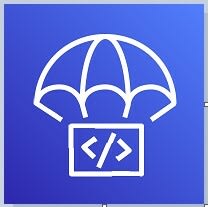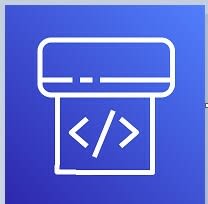An Interest In:
Web News this Week
- April 18, 2024
- April 17, 2024
- April 16, 2024
- April 15, 2024
- April 14, 2024
- April 13, 2024
- April 12, 2024
Overview of AWS Developer Tools - Part 2
The developers tool in Amazon Web Services helps the user to get the program to deliver safely. It also boost the performance of developers and IT operations to make the outcome better. Host code, build, test, and deploy our applications quickly and effectively with AWS developer tools.
This tool allows the user to track, store and control the source code of the program. AWS developer tools are built to work with AWS, making it easier for our team to get set up and be productive. We can use ML and big data to identify issues and suggest solutions based on Amazon best practices.
Introduction to AWS Developer Tools
1. Introduction to AWS Developer Tools - Part 1
2. Introduction to AWS Developer Tools - Part 2
Different AWS Developer Tools
Given below are the different Tools:
- Amazon Corretto
- AWS Cloud9
- AWS CloudShell
- AWS CodeArtifact
- AWS CodeBuild
- AWS CodeCommit
- AWS CodeDeploy
- AWS CodePipeline
- AWS CodeStar
- AWS Fault Injection Simulator
- AWS X-Ray
AWS CodeCommit
AWS CodeCommit is a fully managed source control service that makes it easy for companies to host secure and highly scalable private Git repositories.
It eliminates the need to operate our own source control system or worry about scaling its infrastructure. We can use AWS CodeCommit to securely store anything from source code to binaries, and it works seamlessly with our existing Git tools.
AWS CodeDeploy
AWS CodeDeploy is a service that automates code deployments to any instance, including EC2 instances and instances running on premises.
It makes it easier for us to rapidly release new features, helps us to avoid downtime during application deployment, and handles the complexity of updating our applications.
We can use CodeDeploy to automate software deployments, eliminating the need for error-prone manual operations. The service scales with our infrastructure so we can easily deploy to one instance or thousands.
AWS CodePipeline
AWS CodePipeline is a fully managed continuous delivery service that helps us automate our release pipelines for fast and reliable application and infrastructure updates.
It automates the build, test, and deploy phases of our release process every time there is a code change, based on the release model we define. This enables us to rapidly and reliably deliver features and updates.
We can easily integrate CodePipeline with third-party services such as GitHub or with our own custom plugin. With AWS CodePipeline, we only pay for what we use. There are no upfront fees or long-term commitments.
AWS CodeStar
AWS CodeStar enables us to quickly develop, build, and deploy applications on AWS. AWS CodeStar provides a unified user interface, enabling us to easily manage our software development activities in one place.
With AWS CodeStar, we can set up our entire continuous delivery toolchain in minutes, allowing us to start releasing code faster.
It makes it easy for our whole team to work together securely, allowing us to easily manage access and add owners, contributors, and viewers to our projects.
Each AWS CodeStar project comes with a project management dashboard, including an integrated issue tracking capability powered by Atlassian JIRA Software. With the AWS CodeStar project dashboard, we can easily track progress across our entire software development process, from our backlog of work items to teams recent code deployments. For more information, see AWS CodeStar features.
AWS Fault Injection Simulator
AWS Fault Injection Simulator is a fully managed service for running fault injection experiments on AWS that makes it easier to improve an applications performance, observability, and resiliency.
Fault injection experiments are used in chaos engineering, which is the practice of stressing an application in testing or production environments by creating disruptive events, such as sudden increase in CPU or memory consumption, observing how the system responds, and implementing improvements.
Fault injection experiment helps teams create the real-world conditions needed to uncover the hidden bugs, monitoring blind spots, and performance bottlenecks that are difficult to find in distributed systems.
Fault Injection Simulator simplifies the process of setting up and running controlled fault injection experiments across a range of AWS services so teams can build confidence in their application behavior.
With Fault Injection Simulator, teams can quickly set up experiments using pre-built templates that generate the desired disruptions. Fault Injection Simulator provides the controls and guardrails that teams need to run experiments in production, such as automatically rolling back or stopping the experiment if specific conditions are met.
With a few clicks in the console, teams can run complex scenarios with common distributed system failures happening in parallel or building sequentially over time, enabling them to create the real world conditions necessary to find hidden weaknesses.
AWS X-Ray
AWS X-Ray helps developers analyze and debug distributed applications in production or under development, such as those built using a microservices architecture.
With X-Ray, we can understand how our application and its underlying services are performing so we can identify and troubleshoot the root cause of performance issues and errors.
X-Ray provides an end-to-end view of requests as they travel through our application, and shows a map of our applications underlying components.
We can use X-Ray to analyze both applications in development and in production, from simple three-tier applications to complex microservices applications consisting of thousands of services.
Thanks for reading my article till end. I hope you learned something special today. If you enjoyed this article then please share to your friends and if you have suggestions or thoughts to share with me then please write in the comment box.
Original Link: https://dev.to/makendrang/overview-of-aws-developer-tools-part-2-kei
Dev To
 An online community for sharing and discovering great ideas, having debates, and making friends
An online community for sharing and discovering great ideas, having debates, and making friendsMore About this Source Visit Dev To








